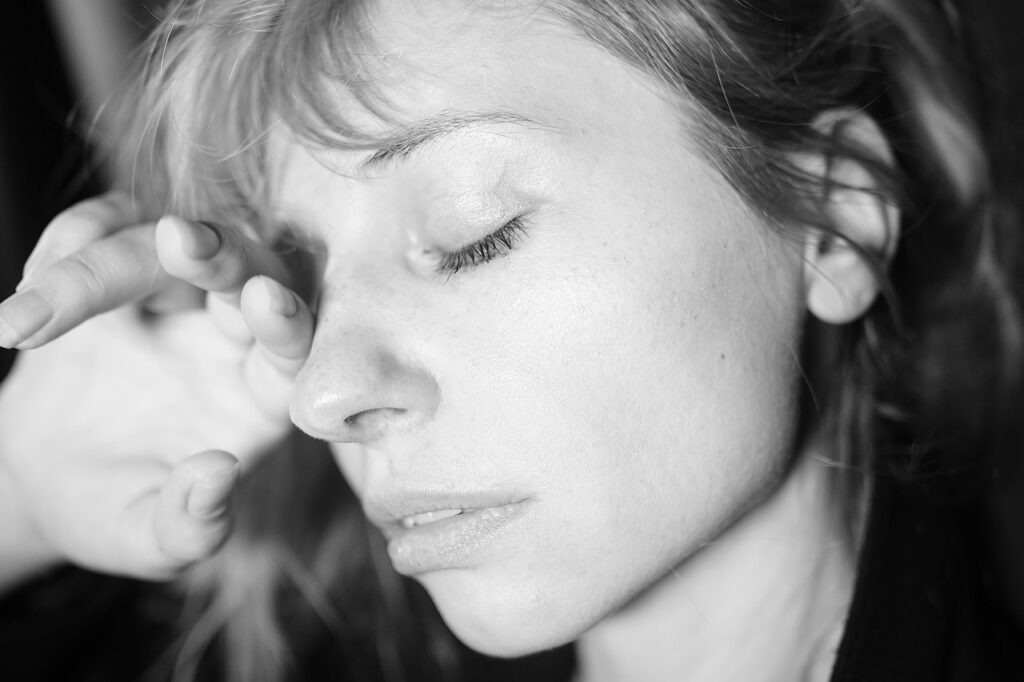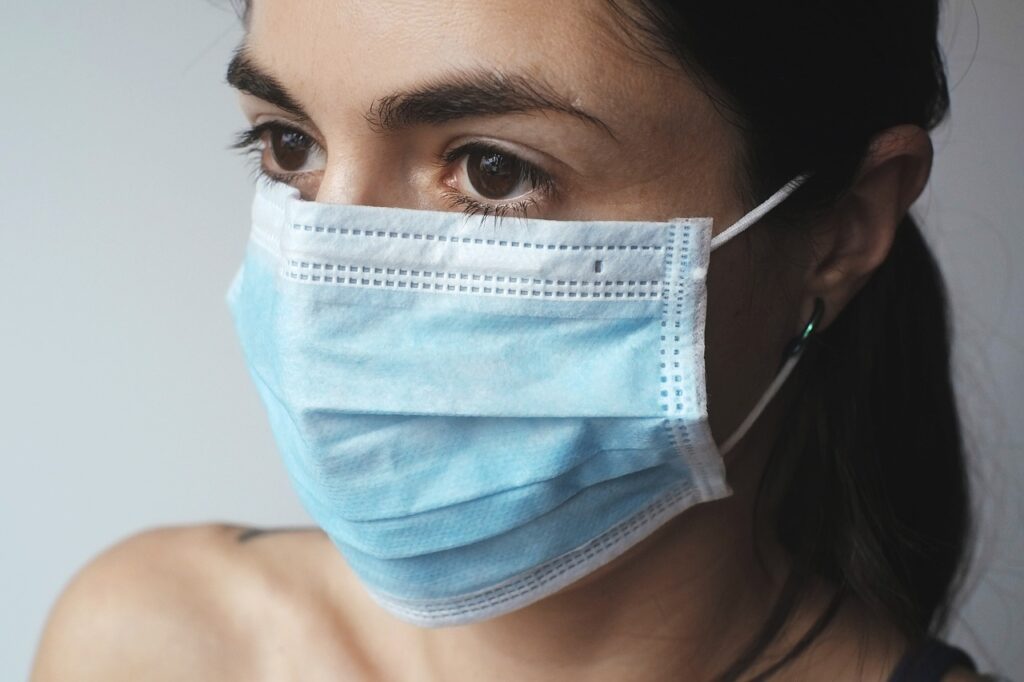
Intro
Breast cancer is one of the most common and potentially deadly diseases affecting women today. While early detection and treatment can greatly increase the chances of survival, many women are still unaware of the signs and symptoms to look out for.
In this blog post, we will be discussing the 12 signs of breast cancer revealed, so you can take control of your health and be proactive in spotting any potential warning signs. By educating ourselves and staying vigilant, we can improve our chances of early detection and ultimately, save lives.
Understanding Breast Cancer: What You Need to Know

Breast cancer is a complex and potentially life-threatening disease that affects thousands of women every year. Understanding breast cancer symptoms and risk factors is crucial in promoting early detection and successful treatment outcomes.
Breast cancer can manifest in various ways, and being aware of the signs and symptoms is essential for every woman. While the most well-known symptom is the presence of a lump or mass in the breast, there are other important indicators to watch out for. For instance, a lump in the armpit can also be a sign of breast cancer, as it indicates the spread of cancer cells to the lymph nodes.
It’s important to note that not all lumps or masses are cancerous, but any unusual changes in the breast or armpit should be taken seriously and examined by a healthcare professional. Additionally, changes in the size, shape, or appearance of the breast, skin changes like redness, pitting, or scaling, nipple changes or discharge, and unexplained pain or tenderness can all be potential warning signs of breast cancer.
Knowing the symptoms and risk factors associated with breast cancer empowers women to take control of their health. By staying informed, performing regular self-examinations, and seeking medical attention for any concerning changes, we can improve the chances of early detection and treatment. Together, let’s prioritize our health and actively work towards reducing the impact of breast cancer on our lives.
Self-Examinations: A Crucial Tool for Early Detection

When it comes to breast cancer, early detection is key. That’s why self-examinations play a vital role in spotting any potential signs or symptoms. By familiarizing yourself with your own breasts and regularly checking for changes, you can take control of your health and increase the chances of detecting breast cancer at an early stage.
Performing a self-examination is simple and can be done in the comfort of your own home. Start by looking at your breasts in the mirror, noting any changes in size, shape, or appearance. Check for any dimpling, puckering, or redness on the skin. Don’t forget to also examine your armpit area for any lumps or swelling.
Next, use your hands to feel for any lumps or masses in your breasts. Move your fingers in a circular motion, covering the entire breast area and armpit. Pay attention to any areas that feel different from the rest of your breast tissue. Remember, not all lumps are cancerous, but it’s important to bring any concerns to the attention of a healthcare professional.
By regularly performing self-examinations, you become more in tune with your body and can spot any changes that may indicate breast cancer symptoms. It’s important to note that self-examinations should never replace regular screenings or check-ups with your doctor. These examinations are an additional tool for early detection and should be done in conjunction with other recommended screenings.
Remember, knowledge is power when it comes to breast cancer. Take the time to perform regular self-examinations and stay proactive in taking care of your health. Together, we can make a difference in the fight against breast cancer.
The First Sign: Unusual Lumps or Masses
One of the most important signs to look out for when it comes to breast cancer is the presence of unusual lumps or masses. While lumps in the breast are often associated with breast cancer, it’s important to note that not all lumps are cancerous. However, any new or unusual lump should be taken seriously and examined by a healthcare professional.
In addition to lumps in the breast, it’s also crucial to pay attention to any lumps in the armpit area. This can be an indication that breast cancer cells have spread to the nearby lymph nodes.
It’s important to remember that breast cancer symptoms can vary from person to person. Some may experience a noticeable lump or mass, while others may not. That’s why it’s essential to be familiar with your own breasts and to regularly perform self-examinations. By becoming familiar with how your breasts normally look and feel, you’ll be better equipped to identify any changes or abnormalities that may occur.
If you do notice any unusual lumps or masses, don’t panic. While it’s natural to feel concerned, keep in mind that not all lumps are cancerous. However, it’s always best to err on the side of caution and have any concerns evaluated by a healthcare professional. Remember, early detection is key when it comes to breast cancer, so be proactive and take charge of your health.
Changes in the Size, Shape or Appearance of the Breast
When it comes to detecting breast cancer, it’s important to pay attention to any changes in the size, shape, or appearance of your breasts. While lumps are often associated with breast cancer, other changes in the breast can also be warning signs.
One important change to look out for is a lump in the armpit. This can indicate the spread of breast cancer cells to the nearby lymph nodes. It’s crucial to be familiar with how your breasts normally look and feel, so you can easily identify any changes that may occur.
In addition to lumps, other changes in the breast to be aware of include swelling, asymmetry, or dimpling of the skin. If you notice that one breast is significantly larger or different in shape compared to the other, or if you see any skin changes like redness, pitting, or scaling, it’s important to consult a healthcare professional.
While not all changes in the breast are cancerous, it’s always better to be safe than sorry. Any concerns or abnormalities should be evaluated by a healthcare professional to rule out breast cancer. Remember, early detection is crucial for successful treatment, so don’t hesitate to take action if you notice any changes in the size, shape, or appearance of your breasts. Stay proactive, stay informed, and take control of your health.
Skin Changes: Redness, Pitting and Scaling
When it comes to detecting breast cancer, it’s essential to pay attention to any changes in the skin of your breasts. Skin changes like redness, pitting, and scaling can be warning signs that something is not right. While these changes may not always indicate breast cancer, they should not be ignored.
Redness in the breast can occur due to inflammation or infection, but it can also be a symptom of breast cancer. If you notice any unexplained redness that persists or worsens over time, it’s crucial to seek medical attention.
Pitting or an orange-peel texture on the skin of the breast is another important sign to watch out for. This change in texture can occur when breast cancer cells block the lymphatic vessels, causing fluid to build up in the skin. If you notice any pitting or unusual texture on the skin of your breasts, it’s important to have it evaluated by a healthcare professional.
Scaling or flaking of the skin can also be a potential indicator of breast cancer. This change in skin texture can occur when breast cancer cells disrupt the normal growth and turnover of skin cells. If you notice any unusual scaling or flaking of the skin, particularly around the nipple or areola, it’s important to seek medical advice.
Remember, not all skin changes are cancerous, but any unexplained changes should be taken seriously. By staying vigilant and seeking medical attention for any concerning skin changes, you can take control of your health and increase the chances of early detection. Stay proactive, stay informed, and prioritize your breast health.
Nipple Changes or Discharge
Nipple changes or discharge can be another important indicator of breast cancer. While nipple discharge is not uncommon and can be completely normal in some cases, it’s important to be aware of any changes that may occur.
If you notice any nipple discharge that is unusual for you, such as discharge that is bloody, clear, or comes from only one nipple, it’s essential to have it evaluated by a healthcare professional. Nipple discharge can also be a sign of infection or a benign condition, but it’s always better to err on the side of caution and have it checked out.
In addition to discharge, changes in the appearance or position of the nipple should also be taken seriously. For example, if your nipple becomes inverted or starts to point inward instead of outward, it could be a potential warning sign. Any unexplained changes in the nipple should be evaluated by a healthcare professional.
Remember, not all nipple changes or discharge are cancerous, but it’s crucial to bring any concerns to the attention of a healthcare professional. By staying vigilant and seeking medical advice for any nipple changes or discharge, you can take control of your health and improve the chances of early detection. Stay proactive, stay informed, and prioritize your breast health.
Swelling in the Armpit or Collarbone
Swelling in the armpit or collarbone can be a concerning sign when it comes to breast cancer. While we often associate breast cancer with changes in the breast itself, it’s important to remember that cancer cells can spread to the nearby lymph nodes, causing swelling in these areas.
If you notice any unexplained swelling or a lump in your armpit or collarbone area, it’s essential to have it evaluated by a healthcare professional. Swelling in these areas can indicate the spread of breast cancer cells, as the lymph nodes play a crucial role in filtering and trapping harmful substances, including cancer cells.
While swelling in the armpit or collarbone area may not always be indicative of breast cancer, it’s important not to ignore it. Swelling can also be caused by infections or other non-cancerous conditions, but it’s better to be safe than sorry.
By staying vigilant and seeking medical attention for any concerning changes, such as swelling in the armpit or collarbone area, you can take control of your health and improve the chances of early detection. Remember, knowledge is power when it comes to breast cancer, so stay proactive, stay informed, and prioritize your breast health.
Unexplained Pain or Tenderness
Experiencing unexplained pain or tenderness in the breast can be a cause for concern and may be a sign of breast cancer. While pain or tenderness in the breasts can be caused by various factors, such as hormonal changes or injury, it’s important not to dismiss these symptoms without further investigation.
Breast cancer can cause pain or tenderness in the affected breast, and this pain may vary in intensity. It’s essential to pay attention to any new or persistent pain that doesn’t seem to have an obvious cause. If you notice any unexplained pain or tenderness in one or both of your breasts, it’s crucial to seek medical advice.
Remember, not all breast pain is indicative of cancer, and it’s natural to worry when experiencing discomfort. However, it’s better to be safe than sorry. By seeking medical attention and discussing your symptoms with a healthcare professional, you can obtain an accurate diagnosis and receive the necessary treatment if needed.
Don’t ignore unexplained pain or tenderness in your breasts. Take control of your health by staying vigilant, seeking medical advice, and ensuring your breast health is a priority. Early detection is key in the fight against breast cancer, so let’s be proactive and stay informed.
Formation of Hard, Knot-Like Areas
Formation of hard, knot-like areas in the breast is another sign to watch out for when it comes to breast cancer. These areas may feel different from the rest of the breast tissue and can be accompanied by other symptoms like skin changes or nipple abnormalities. If you notice any firm or hard lumps in your breast that do not go away or seem to be increasing in size, it’s important to seek medical attention.
These hard, knot-like areas can indicate the presence of cancerous cells in the breast. They may be felt as small, pea-sized lumps or larger masses. While not all hard lumps are cancerous, it’s essential to have them evaluated by a healthcare professional to rule out any potential risk.
If you do find any hard, knot-like areas in your breast, try not to panic. Remember that early detection is key and seeking medical advice is the best course of action. Your healthcare provider will be able to assess the lump and determine if further testing, such as a biopsy, is necessary. By taking control of your health and staying proactive, you can improve your chances of early detection and successful treatment outcomes. Stay informed, perform regular self-examinations, and prioritize your breast health.
Itchy, Scaly Sore or Rash on the Nipple
Itchy, scaly sore or rash on the nipple is another potential sign of breast cancer that women should be aware of. While nipple changes and discharge are already important indicators, the presence of an itchy, scaly sore or rash on the nipple should not be overlooked.
This symptom can be alarming, but it’s crucial to stay calm and seek medical attention if you experience it. While there are various reasons for nipple itchiness, such as allergies or eczema, an unexplained rash or sore that persists should be evaluated by a healthcare professional.
Breast cancer can cause changes in the skin cells of the nipple, leading to itchiness, scaling, or the development of a sore or rash. If you notice any unusual skin changes on your nipple, particularly if they are accompanied by other breast changes or symptoms, it’s important to have them examined.
Remember, not all nipple itchiness or rashes are cancerous, but it’s always better to err on the side of caution and have them checked out. By seeking medical attention and discussing your symptoms with a healthcare professional, you can obtain an accurate diagnosis and ensure timely treatment if necessary. Stay proactive, stay informed, and prioritize your breast health.
Dimpling of Breast Skin
Dimpling of the breast skin is another potential sign of breast cancer that women should be aware of. This symptom occurs when the skin of the breast starts to appear puckered or dimpled, resembling the texture of an orange peel. While it may not be the most well-known sign of breast cancer, it is crucial not to overlook it.
Dimpling of the breast skin can occur due to the presence of cancerous cells pulling on the ligaments and tissues within the breast. This causes the skin to become indented or dimpled, creating a visible change in the texture and appearance of the breast.
If you notice any dimpling or puckering of the skin on your breast, it’s important to take it seriously and seek medical attention. While dimpling can also be caused by other non-cancerous conditions, such as inflammation or infection, it’s always better to be safe than sorry. A healthcare professional will be able to assess your symptoms and determine if further evaluation, such as a mammogram or ultrasound, is necessary.
By staying vigilant and seeking medical advice for any concerning changes, such as dimpling of the breast skin, you can take control of your health and improve the chances of early detection. Remember, knowledge is power when it comes to breast cancer, so stay proactive, stay informed, and prioritize your breast health.
Unexplained Fatigue
Unexplained fatigue is a symptom that many people experience from time to time. However, when it comes to breast cancer, it can be an important sign to watch out for. Fatigue associated with breast cancer is often more extreme and persistent than normal tiredness, and it doesn’t improve with rest or sleep. It can make even simple tasks feel overwhelming and can greatly impact a person’s quality of life.
If you find yourself constantly feeling exhausted, even after getting enough rest, it’s important to take this symptom seriously. While fatigue can be caused by a variety of factors, including stress or an underlying medical condition, it’s essential to rule out breast cancer as a potential cause.
If you’re experiencing unexplained fatigue that doesn’t seem to have a clear cause, it’s crucial to consult with a healthcare professional. They will be able to evaluate your symptoms, conduct necessary tests, and provide a proper diagnosis. Remember, early detection is key in the fight against breast cancer, so staying proactive and seeking medical advice is vital. Don’t dismiss persistent fatigue as just normal tiredness – prioritize your health and take control of your well-being.

I’m Avia Rice Gauthier – a mom, Founding Attorney for the Gauthier Law Firm in Dallas, TX, and a breast cancer survivor. Juggling law and motherhood, I lead with compassion. My journey through cancer turned me into an advocate, spreading awareness and positivity. Join me in celebrating victories and navigating life’s twists – making a positive impact in the DFW area and beyond!
